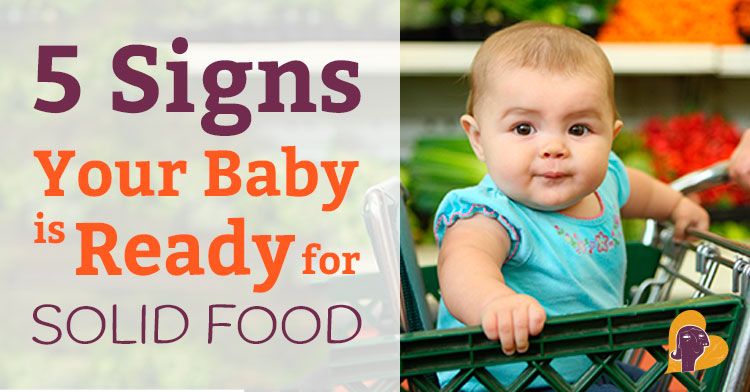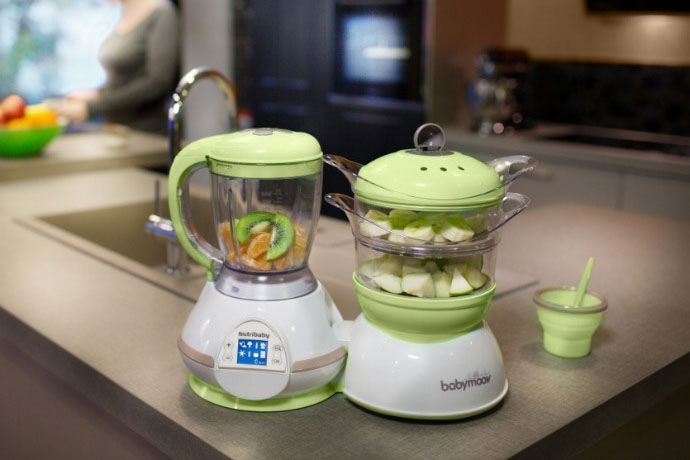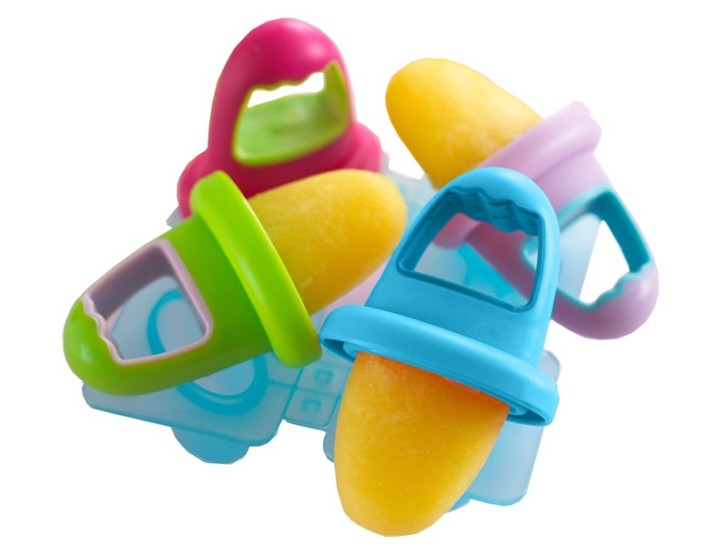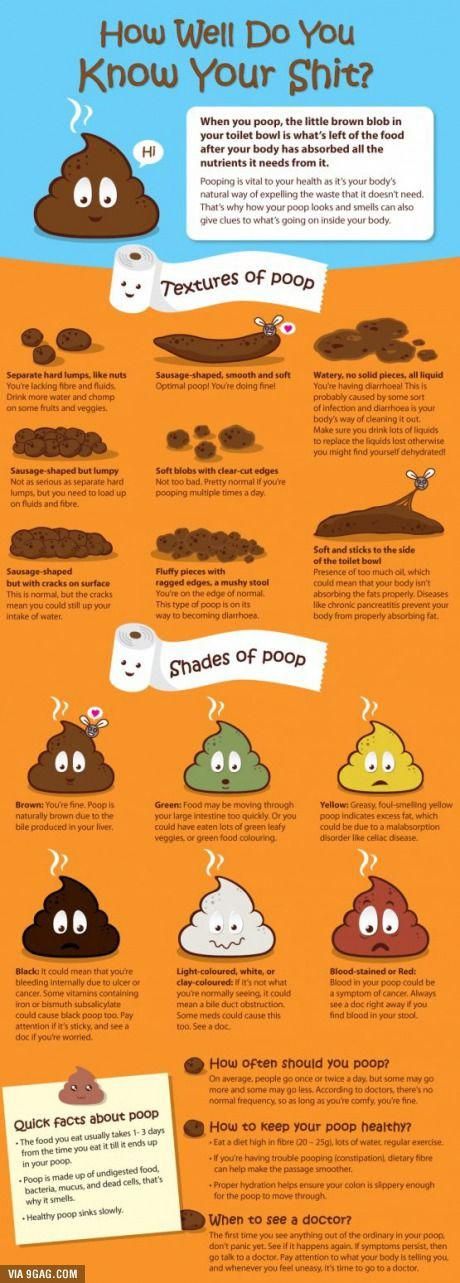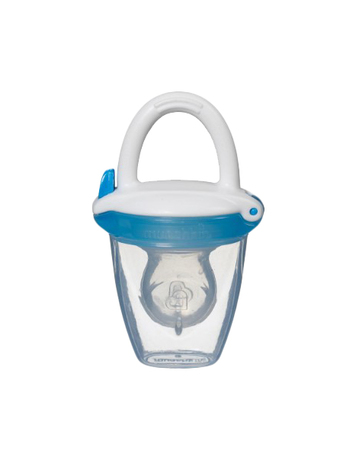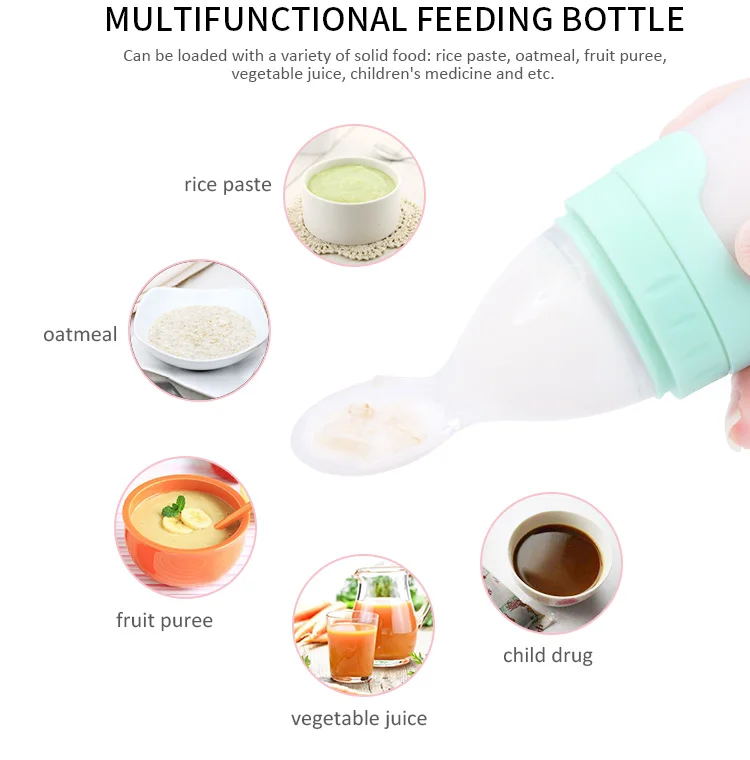Green bean combination baby food
Easy Green Bean Baby Food
Learn how to make quick and flavorful Green Bean Baby Food as a baby-led weaning food or as a Stage 1 or 2 puree. Plus, find tips on how to store and combine the puree with other flavors to make yummy baby food combinations.
Green Bean Baby Food
Green beans are such a common veggie and one that can be flavored in so many ways that it’s a wonderful option for baby. I love making the puree and offering a whole bean as different texture experiences, so you can choose the one that works best for where you are in your baby-feeding journey.
Read on to learn how to make a basic Green Bean Puree, how to serve Green Beans as a BLW food, options for easy baby food combinations with green beans, and tips for green bean finger foods.
Your toddler won’t eat? Help is here!
Sign up for our email updates to get tips and ideas sent to your inbox.
Please enable JavaScript in your browser to complete this form.Email *
Ingredients You Need
Here’s a look at the ingredients you need to make this baby food recipe, whether as a puree or a baby-led weaning food.
- Green beans: I am showing this recipe using fresh green beans, but you can use yellow beans, French beans, or frozen green beans.
- Olive oil: Olive oil adds some flavor and fat and makes the food taste better.
See the Notes at the end of the recipe for options to turn the puree into a baby food combination by pairing it with other purees.
Step-by-Step Instructions
Below is an overview of how to make this baby food recipe. Scroll to the end of the post for the full amounts and timing info.
- Add the green beans to a steamer basket set in a pot with water. Set pot over medium heat, and when the water starts to steam, cover pot.
- Cook until the green beans are tender when poked with a fork. Let cool slightly.
- Serve one at a time, baby-led weaning style.
- Or, to make a puree, transfer to a blender with olive oil. Blend until smooth.
Green Beans for Baby-Led Weaning
You can serve cooked green beans to a baby feeding themselves in the baby-led weaning style of eating. As long as the green beans are soft and tender, they are a great food for babies to eat starting around 6 months, or whenever they start solids.
As long as the green beans are soft and tender, they are a great food for babies to eat starting around 6 months, or whenever they start solids.
Green Bean Puree
You can serve green bean puree on a baby spoon or in a reusable pouch, depending on how you prefer or where you’ll be. It stores well and is easy to vary the flavor as you like.
Green Bean Baby Food Combinations
To vary the flavor and nutrients in this as a Stage 2 baby food, you can combine Green Bean Baby Food with any of the following purees:
Best Apple Puree (with Flavor Combinations + Storage Tips))
There’s no one right serving size for every child, so start with a smaller amount and offer more as indicated by baby. When they turn their head or close their mouth, end the meal—it’s usually pretty obvious when they want to be done!
Get the recipe
Easy Pear Puree (Plus Easy Storage Tips)
Use ripe pears—they should give just a little to the touch and smell like a pear—for the best flavor in this puree.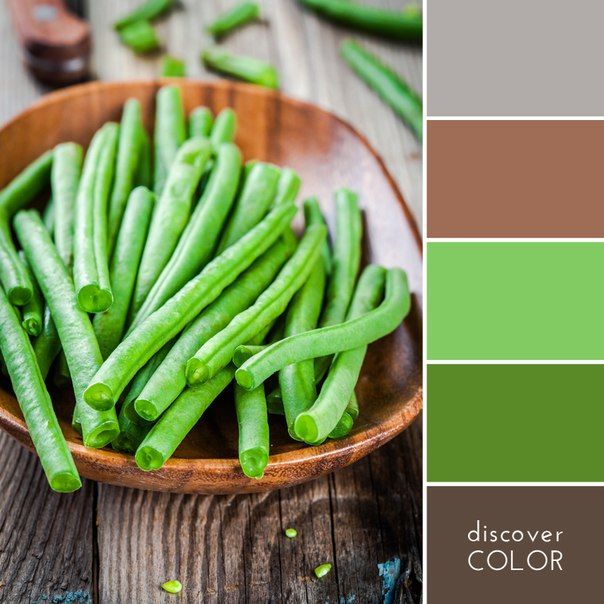 Some babies may want a few spoonful, some a bowlful. Follow baby’s cues to determine the right amount for them.
Some babies may want a few spoonful, some a bowlful. Follow baby’s cues to determine the right amount for them.
Get the recipe
Easy Sweet Potato Puree
Perfectly creamy Sweet Potato Puree is a very favorite easy side dish (and baby food!). This is delicious in fall, takes less than 30 minutes, and can be flavored in all sorts of ways.
Get the recipe
Easy Chicken Puree
This chicken puree is a nutrient-rich baby food that's easy to make and packed with flavor. It's a quick blend of chicken and sweet potato that's versatile, so you can make it as a Stage 1 or 2 baby food.
Get the recipe
Easy Avocado Puree
This easy baby food is rich in healthy fats, super smooth, and has a mellow flavor. This is a great puree to make when you’re eating something like tacos…so you can have some too!
Get the recipe
Butternut Squash Baby Food Puree
You can make this puree to feed to a baby or toddler, or as a simple side dish for the whole family to share.
Get the recipe
How to Store
Store the puree in airtight containers in the fridge for up to 5 days. Or freeze in an ice cube tray overnight, transfer to a freezer bag, remove as much air as you can and freeze for up to 6 months. Thaw 1-2 cubes overnight in the fridge in a container or at room temperature for about an hour.
Best Tips for Success
- Green Bean Baby Food Combination: Mix with equal parts Apple Puree, Sweet Potato Puree, Pear Puree, Avocado Puree, Chicken Puree, or another favorite puree.
- Use frozen green beans in place of fresh and reduce the cooking time by 2 minutes or so.
- Use water, no-salt-added broth of any type, breastmilk, or formula as the liquid when blending the puree.
- You may also enjoy Beets for Baby.
Baby Food
Baby Food
Baby Food
Baby Food
I’d love to hear your feedback on this post, so please rate and comment below!
Prep Time 10 minutes
Cook Time 8 minutes
Total Time 18 minutes
Author Amy Palanjian
Cuisine American
Course Baby Food
Calories 44kcal
Servings 6 8
- ▢ 1 pound green beans (stems trimmed)
- ▢ 1 tablespoon olive oil
Add the green beans to a steamer basket set in a pot with 4 inches of water.
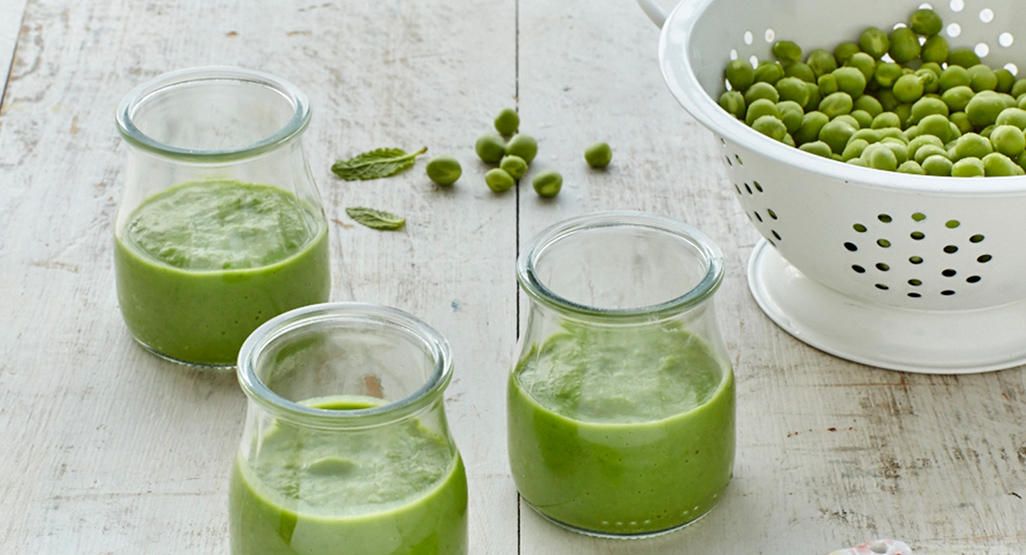 Set pot over medium heat and when the water starts to steam, cover pot.
Set pot over medium heat and when the water starts to steam, cover pot.Cook for 8-10 minutes, or until the green beans are tender when poked with a fork. Let cool slightly.
Serve one at a time, baby-led weaning style. (Optionally, toss in a little olive oil before serving.)
Or, to make a puree, transfer to a blender with the olive oil. Blend smooth, adding ½-¾ cup water or no-salt-added broth at a time to make a smooth puree.
Calphalon 5-Quart Pot
Storage Containers
- Store the puree in airtight containers in the fridge for up to 5 days. Or freeze in an ice cube tray overnight, transfer to a freezer bag, remove as much air as you can, and freeze for up to 6 months. Thaw 1-2 cubes overnight in the fridge in a container or at room temperature for about an hour.
- Green Bean Baby Food Combination: Mix with equal parts Apple Puree, Sweet Potato Puree, Pear Puree, Avocado Puree, Chicken Puree, or another favorite puree.
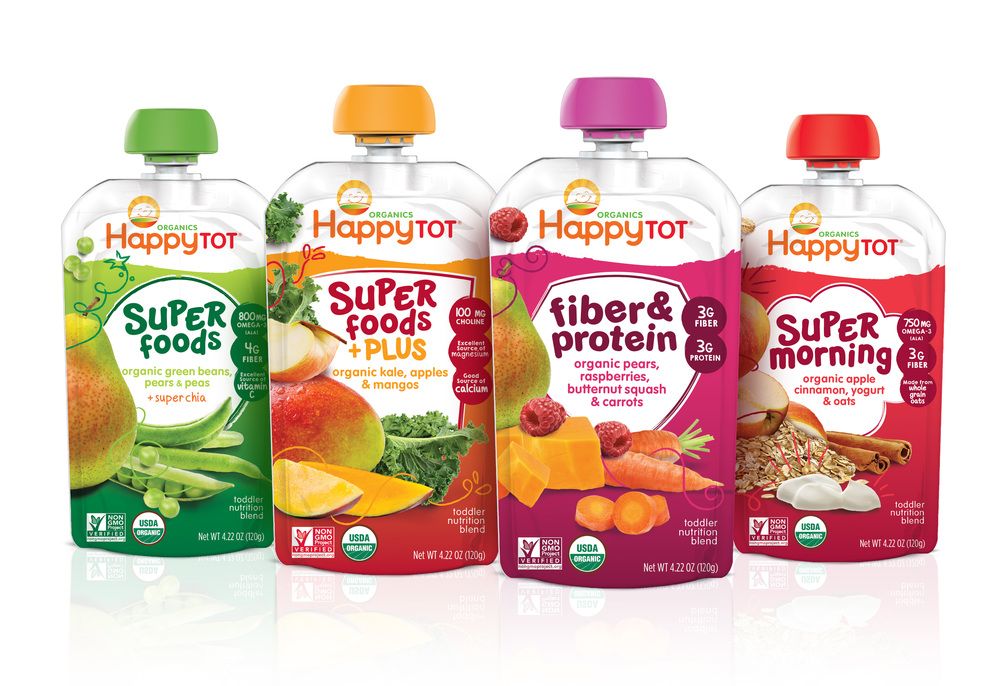
- Use frozen green beans in place of fresh and reduce the cooking time by 2 minutes or so.
- Use water, no-salt-added broth of any type, breastmilk, or formula as the liquid when blending the puree.
Serving: 0.25cup, Calories: 44kcal, Carbohydrates: 5g, Protein: 1g, Fat: 3g, Saturated Fat: 0.4g, Polyunsaturated Fat: 0.3g, Monounsaturated Fat: 2g, Sodium: 5mg, Potassium: 160mg, Fiber: 2g, Sugar: 2g, Vitamin A: 522IU, Vitamin C: 9mg, Calcium: 28mg, Iron: 1mg
Tried this recipe?Rate in the comments and tag @yummytoddlerfood on IG!
Green Bean Baby Food (Stage One)
Looking for the first puree to serve your baby? Try this Green Bean Baby Food recipe! Steamed until just tender, this nutritious and smooth puree features a mild taste for your baby’s emerging palette. It’s a great Stage 1 Baby Food for 4-6 months and up.
Medically reviewed and co-written by Jamie Johnson, Registered Dietitian Nutritionist (RDN), and Lauren Braaten, Pediatric Occupational Therapist (OT).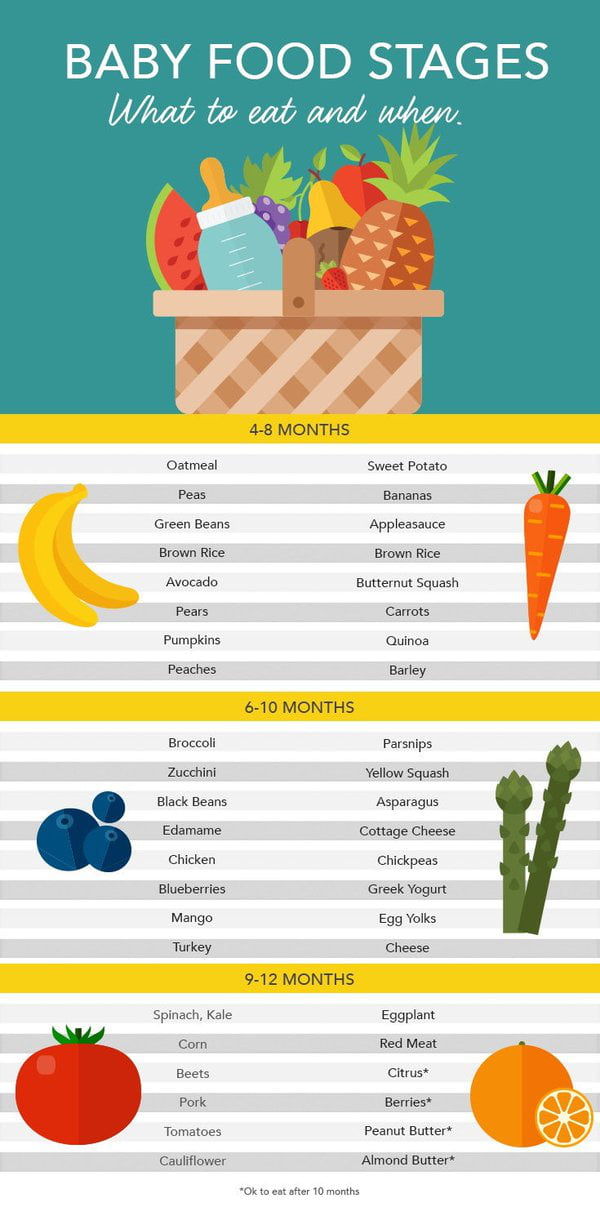
Hold on ’cause I’m about to tell you something shocking. 😲
This homemade green bean puree is not only full of essential nutrients, but it is also delicious!
I know, this seems hard to believe because pureed green beans as baby food get a pretty bad rap.
But it’s 💯 true! This green bean puree will knock your 🧦 off!
We start with fresh or frozen green beans that are gently steamed to bring out the freshness. Then, we blend them into a velvety and creamy puree for baby. I add a pinch of cilantro, parsley, or basil to this puree to round out the flavor profile, but you can skip that step if you prefer. Because we are using this gentle way of cooking the green beans 💚, their taste doesn’t get aggressive, making it the perfect light puree for your baby’s first bite.
Is it your first time making homemade baby food? If you answered yes, then I suggest you start this journey by reading my in-depth Guide on How to Make Homemade Baby Food. The detailed article goes over all the essential information such as the best cooking tools to have on hand, safe storage, knowing when your baby is ready for solids, introducing purees, making the best first foods for baby, and more! You can also check out my best-selling cookbook for even more information and recipes.
The detailed article goes over all the essential information such as the best cooking tools to have on hand, safe storage, knowing when your baby is ready for solids, introducing purees, making the best first foods for baby, and more! You can also check out my best-selling cookbook for even more information and recipes.
Green Bean Baby Food Video
Watch this video to see how easy this Green Bean Puree recipe is to make!
Reasons to Love this Green Bean Puree- simple and easy to make
- filled with nutrients for a growing baby
- features a gentle taste
- great for babies 4-6+ months
- stage 1 baby food
- freezer-friendly
- smooth and creamy
- aids digestion
- budget-friendly
Make sure to read the recipe card below for full ingredients and instructions!
- Green Beans: You can use fresh or frozen green beans for this recipe.
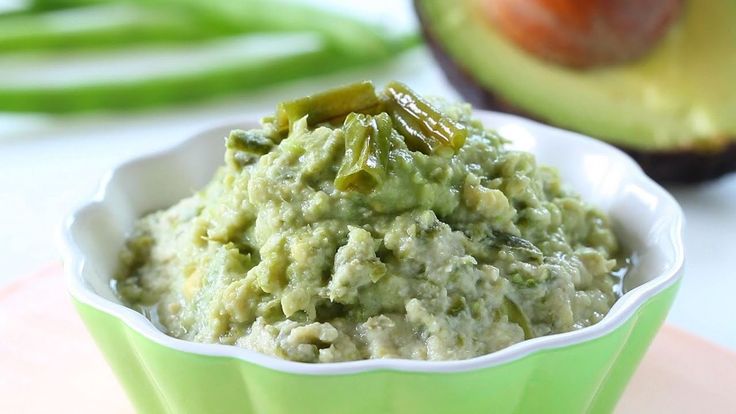
- Herbs: You can add a pinch of cilantro, basil, parsley, mint, or chives to this puree to enhance the flavor profile. While I love the boost of flavor that herbs add to the puree, putting in herbs is completely optional.
- Good source of fiber to help with any digestive issue.
- A great source with vitamin C to help support your baby’s immune system.
- A good source of vitamin K to help strengthen bones.
Want to learn more about the benefits of Green Beans for your baby? Then read the entire Green Bean Profile here.
Green Bean Tip: You can use either fresh or frozen green beans for this recipe. If you want to use organic but are on a budget, try looking for frozen organic green beans in the freezer aisle, which are cheaper than fresh conventional green beans.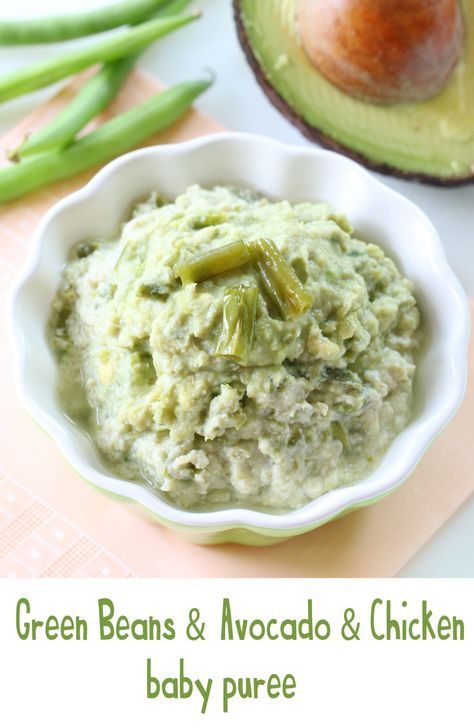
- Trim: Roughly trim the green beans. If you’ll be adding herbs, roughly chop them as well.
- Steam: Fill a medium saucepan with 2” of water and bring to boil over medium heat. Place the green beans (fresh or frozen) into a steamer basket over the boiling water, cover, and cook for 10 minutes or until tender. Let it cool slightly — reserve the steamer water.
- Puree: Transfer the green beans and herb to a blender or food processor and puree for 1-2 minutes or until smooth, adding liquid in 1/4 cup increments if needed until you reach your desired consistency.
- Eat: Serve to your baby or freeze for later.
These tools will make it a lot easier for you to make this healthy Green Bean Puree. For more of my favorite kitchen tools make sure to check out my shop.
- Steamer insert with lid
- Blender or Food Processor
- Freezer Tray
- Storage Containers for Fridge
- Stasher Bag
- Bib with catch pocket
- Reusable pouches
Recipe Tips
- Adding Healthy Fats: Adding a teaspoon of avocado, coconut oil, or olive oil wonderfully compliments this green bean puree.
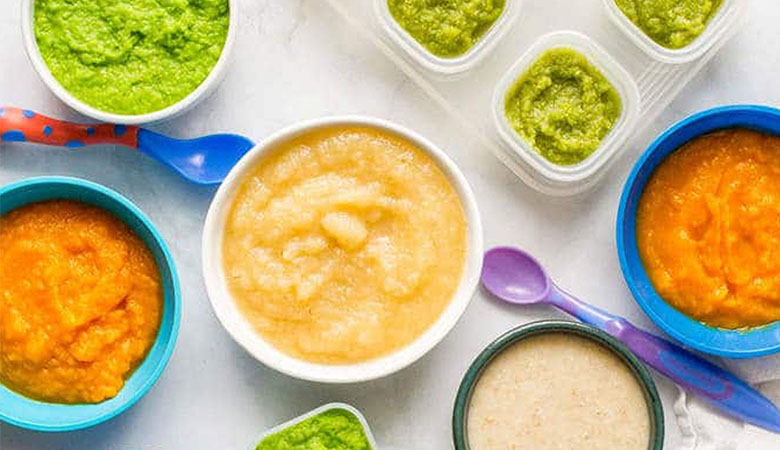 Not only will healthy fats bring out the natural nuttiness of green beans, but they also add healthy fats into your baby’s diet.
Not only will healthy fats bring out the natural nuttiness of green beans, but they also add healthy fats into your baby’s diet. - Fresh or Frozen: Feel free to use fresh or frozen green beans for this recipe.
While I love the crisp and fresh flavor of steamed green beans, there are several ways you can cook green beans for baby food.
SkilletTrim the green beans and then add them to a large skillet that has been preheated with 1 tablespoon of olive oil over medium heat. Cook for 5-7 minutes, add 2 tablespoons of water, cover, and cook for 2 more minutes. Puree in a blender as directed below.
RoastedIf you want the baby puree to have a dense, earthy taste, then roast the green beans instead.
Trim the green beans and then toss with 1-2 tsp of olive or avocado oil on a baking sheet. Cook 425 degrees F for 18-20 minutes, tossing halfway through baking time or until tender when pricked with a fork.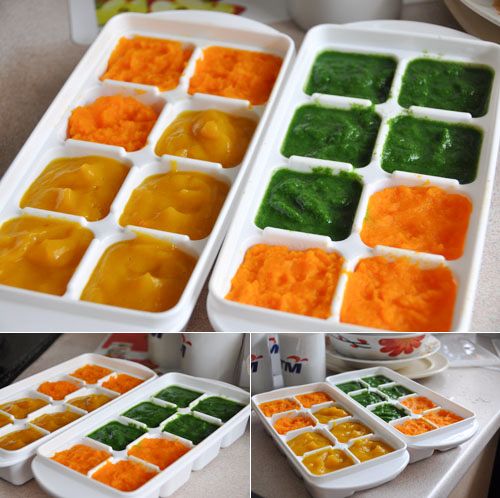 Puree in a blender as directed below.
Puree in a blender as directed below.
Frequently Asked Questions
When can baby eat green beans?
Babies can have green beans as one of their first foods. When a baby can start on solids is determined by their own rate of development, which generally comes between 4-6 months of age. Some of the developmental milestones babies need to reach in order to start solids include: if your baby has solid control of their head and neck, if your baby has doubled in weight, and if your baby is reaching for or opening their mouth when you eat (see my guide here). Before you start baby on purees, you should consult with your pediatrician to make sure your child is developmentally ready.
Can green beans be baby’s first food?
Green beans can 100% be your baby’s first food if you want it to be. It is recommended to wait to introduce the top eight allergen foods to your baby once a few other well-tolerated foods have been introduced, but otherwise, foods can be introduced in any order so choose whatever you are most excited for your baby to have.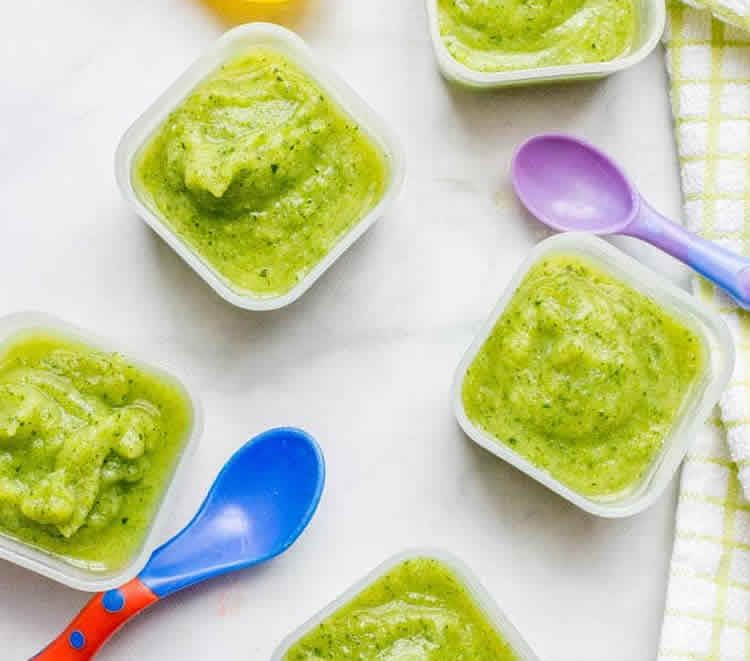
Are green beans a common allergen for baby?
No, green beans are not a common allergen, however, as with any food, start with a small portion and be aware of any signs that might be an allergic reaction after introducing it.
Do green beans cause constipation for babies?
Green beans do not usually cause constipation in babies, and may actually help alleviate constipation due to their high fiber content.
Adding SpicesFeel free to add a big pinch of roughly chopped basil, cilantro, mint, parsley, or chives to this puree before blending.
Coconut Oil: Another great addition to this puree is adding 1-2 teaspoons of organic virgin coconut oil. Healthy fats, such as coconut oil, help aid your baby’s brain development and function, repair torn or strained muscles (great for crawlers), and is great for digestion needs.
How to Store Green Bean PureeRefrigeratorYou can store this puree in an airtight container in the fridge for up to 4 days.
This puree can be frozen for up to 4 months.
- Spoon puree into a freezer storage container. Do not overfill.
- Place the lid on the storage container or cover with a piece of saran wrap — label with the date and recipe name.
- Place the tray into the freezer and let it freeze completely – preferably overnight.
- Pop-out the baby food cubes and place them in a zip-lock baggie or stasher bag. Don’t forget to relabel the baggie or stager bag for future reference.
Need more information on how to store your baby foods? Head over to my Best Baby Food Storage Containers – Plus 6 Tips on Freezing and Thawing post!
Label Tip: Don’t forget to label your purees before you place them in the fridge or freezer with the name of the puree and the date you made it. Take it from me; by the end of the week, you will completely forget what is in your freezer and how long it’s been there. 😉
😉
While Green Bean Baby Food is already tasty by itself, you can also easily mix and match it with other nutrient-dense baby food purees. For a Stage Two puree, give these fun flavor combos a try!
- Apples
- Broccoli
- Quinoa Baby Cereal
- Chicken
- Pea
- Softened Tofu
- Yogurt
- Mango
Green Beans for Baby-Led Weaning: Green beans are also a great food to serve to your baby whole for baby-led weaning (6+ months) or as a finger food (9+ months). You can always serve baby a combination of purees and finger foods right from the start.
Puree Feeding Tips
- Follow your baby’s lead – when feeding purees from a spoon, sometimes there’s a tendency to keep offering bites past the point of your baby being full. Always follow your baby’s cues for when they are done eating. Turning away from the spoon, closing her mouth, or pushing food away are all signs that your baby is finished with the meal.
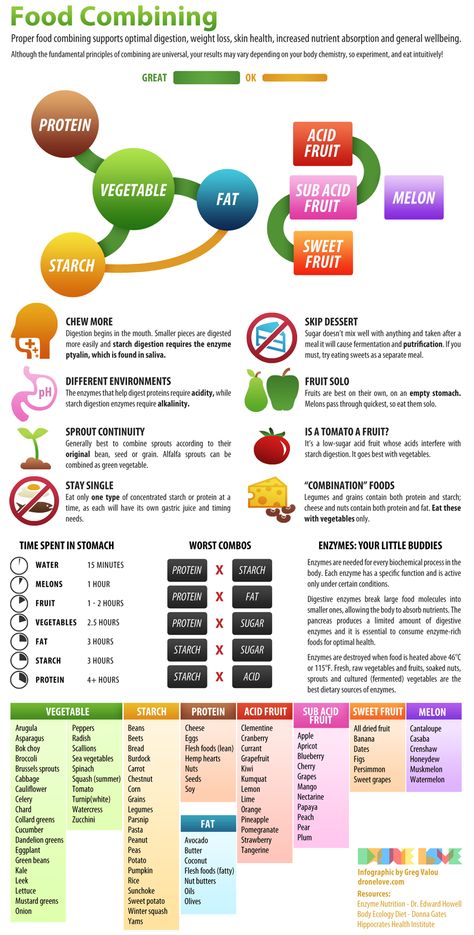
- Try adding a little seasoning or spice to purees – babies like flavor! Or consider changing the temperature of purees from time to time, to slightly warmed or slightly chilled. Varying these aspects adds to the sensory experience!
- Throwing spoons is a common phase that all babies go through at one point or another. One of the best ways to handle spoon throwing is to ignore it and keep feeding your baby as usual (with an extra spoon you already have at the table). If your baby ends up also throwing back up spoons #2 AND #3, simply encourage your baby to eat with their hands until they appear to be finished with the meal. ***Give baby plenty of opportunities to practice putting items in and taking items out of containers outside of mealtimes.
Or watch a shortened version of this video here.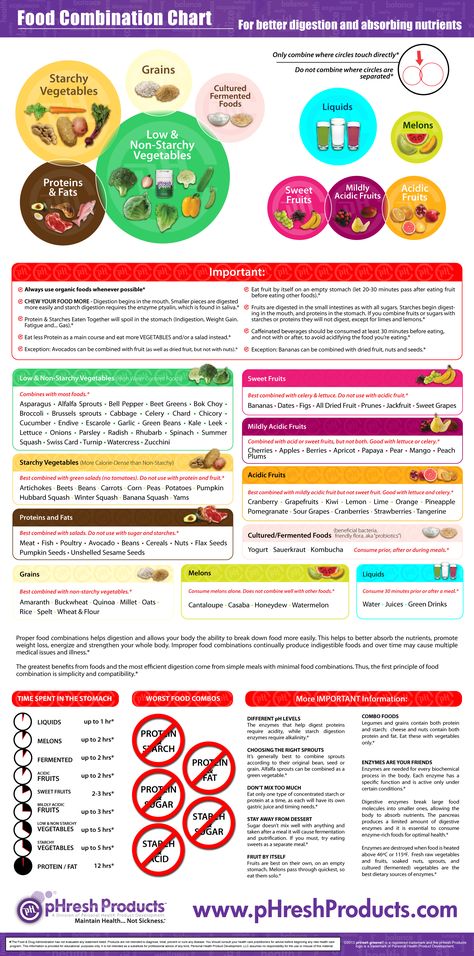
- 1 pound green beans, fresh or frozen
- 1 big pinch of fresh basil, cilantro or parsley, roughly chopped (optional)
Trim: roughly trim the green beans and roughly chop the herb (if using).
Steam: fill a medium saucepan with 2” of water and bring to boil over medium heat. Place the green beans (fresh or frozen) into a steamer basket over the boiling water, cover, and cook for 10 minutes or until tender. Let cool slightly. Reserve steamer water.
Puree: transfer the green beans and herb to a blender or food processor and puree for 1-2 minutes or until smooth, adding liquid in 1/4 cup increments if needed until you reach your desired consistency.
Eat: serve to baby or freeze for later.
Age: 4-6 months and up
Yield: 16 ounces
Storage: Fridge – store in an airtight container in the fridge for up to 4 days or in the freezer for up to 4 months.
Adding Spices: you can add a big pinch of roughly chopped basil, cilantro, mint, parsley or chives to this puree before blending.
Blender
Freezer Tray
Stasher Storage Bag
Bumkins Grip Plate
Did you make this recipe?
Tag @babyfoode on Instagram and hashtag it #babyfoode!
Pin Recipe Email a Friend
Calories Baby food, Vegetables, green beans and potatoes. Chemical composition and nutritional value.
Chemistry and Nutrition Analysis
Nutrition and Chemistry
"Baby Food, Vegetables, Green Beans and Potatoes" .The table shows the content of nutrients (calories, proteins, fats, carbohydrates, vitamins and minerals) per 100 grams of the edible part.
| Nutrient | nine0013 NumberNorm** | % of the norm in 100 g | % of the norm in 100 kcal | 100% normal | |
| Calories | 62 kcal | 1684 kcal | 3. 7% 7% | 6% | 2716 g |
| Proteins | 2.2 g | 76 g | 2.9% | 4.7% | 3455 g |
| Fats | nine0013 1.9 g56 g | 3.4% | 5.5% | 2947 g | |
| Carbohydrates | 7.6 g | 219 g | 3.5% | 5.6% | nine0013 2882|
| Dietary fiber | 1. 4 g 4 g | 20 g | 7% | 11.3% | 1429 g |
| Water | 86.2 g | 2273 g | 3.8% | 6.1% | 2637 g |
| Ash | 0.7 g | ~ | |||
| Vitamins | |||||
| Vitamin A RE | 14 mcg | 900 mcg | 1. 6% 6% | 2.6% | nine0013 6429|
| Retinol | 0.012 mg | ~ | |||
| beta Carotene | 0.028 mg | 5 mg | nine0013 0.6%1% | 17857 | |
| Lutein + Zeaxanthin | 50 mcg | ~ | |||
| Vitamin B1, thiamine | nine0013 0.1.5 mg | 2.7% | 4.4% | 3750 g | |
| Vitamin B2, riboflavin | 0.11 mg | 1.8 mg | 6.1% | 9.8% | 1636 |
| Vitamin B4, choline | 10 mg | 500 mg | 2% | 3.2% | 5000 g |
| Vitamin B5, pantothenic | nine0013 0.286 mg5 mg | 5.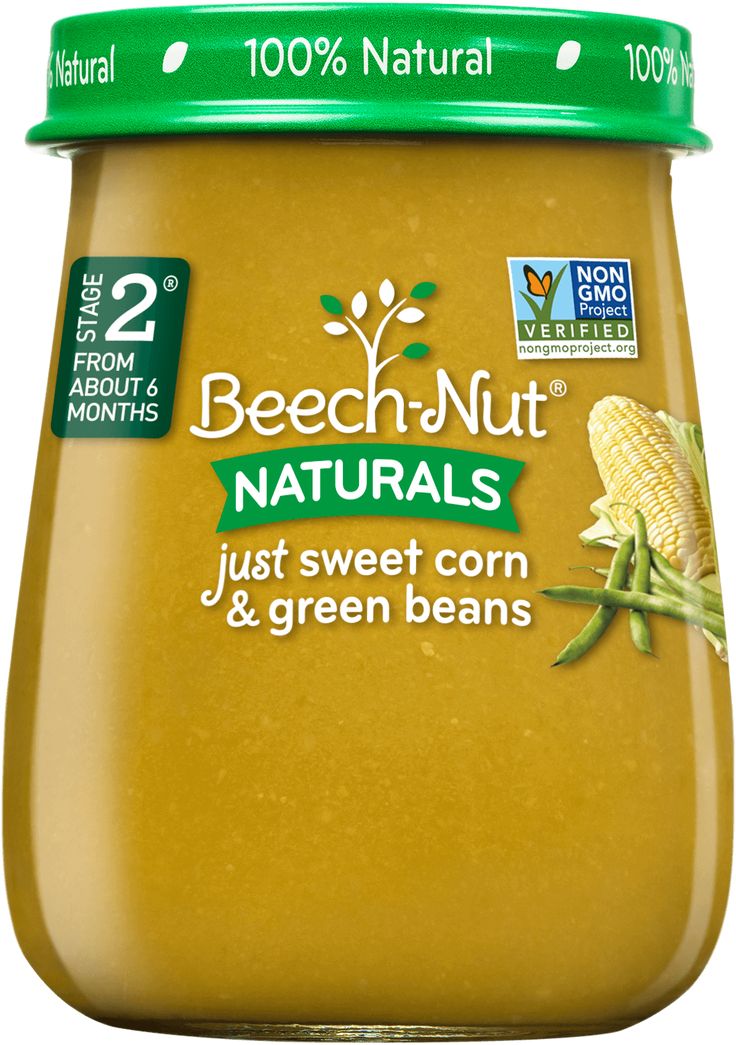 7% 7% | 9.2% | 1748 | |
| Vitamin B6, pyridoxine | 0.08 mg | 2 mg | 4% | 6.5% | 2500 g |
| Vitamin B9, folates | 10 mcg | 400 mcg | 2.5% | 4% | 4000 g |
| Vitamin B12, cobalamin | nine0013 0.15 mcg3 mcg | 5% | 8.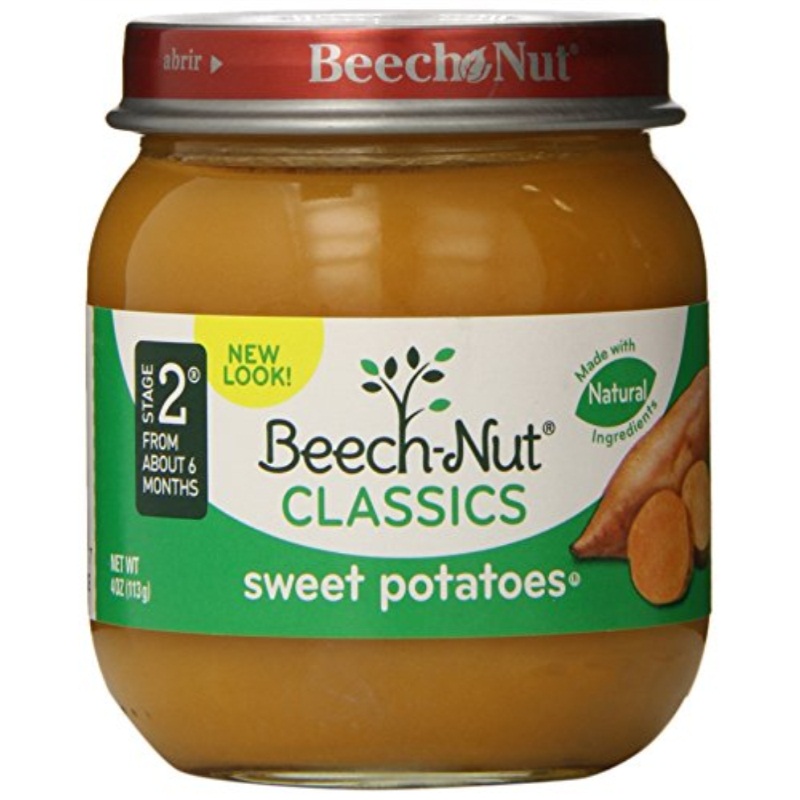 1% 1% | 2000 | |
| Vitamin C, ascorbic | 1.1 mg | 90 mg | 1.2% | 1.9% | 8182 g |
| Vitamin E, alpha tocopherol, TE | 0.08 mg | 15 mg | 0.5% | 0.8% | 18750 |
| Vitamin K, phylloquinone | nine0013 1.4 mcg120 mcg | 1.2% | 1.9% | 8571 g | |
| Vitamin PP, NE | 0. 46 mg 46 mg | 20 mg | 2.3% | 3.7% | 4348 g |
| Macronutrients | |||||
| Potassium, K | 148 mg | 2500 mg | nine0013 5.9%9.5% | 1689 | |
| Calcium Ca | 60 mg | 1000 mg | 6% | 9. 7% 7% | 1667 |
| Magnesium, Mg | 20 mg | 400 mg | 5% | 8.1% | 2000 |
| Sodium, Na | 18 mg | 1300 mg | 1.4% | nine0013 2.3%7222 g | |
| Sulfur, S | 22 mg | 1000 mg | 2.2% | 3.5% | 4545 g |
| Phosphorus, P | 61 mg | 800 mg | 7.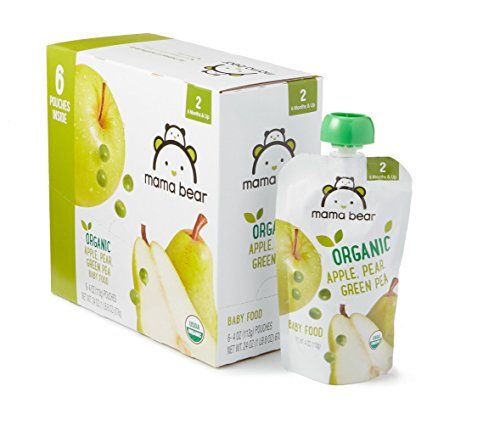 6% 6% | 12.3% | 1311 g |
| Trace elements | nine0025 | ||||
| Iron, Fe | 0.5 mg | 18 mg | 2.8% | 4.5% | 3600 g |
| Manganese, Mn | 0.28 mg | 2 mg | nine0013 14%22.6% | 714 g | |
| Copper, Cu | 40 mcg | 1000 mcg | 4% | 6.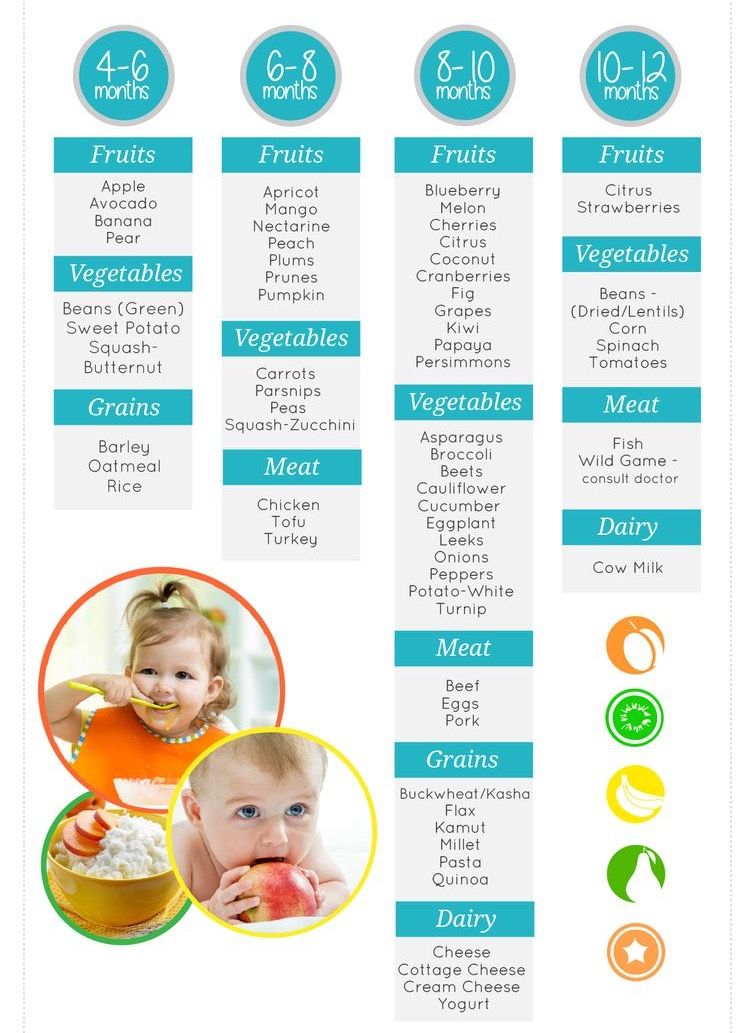 5% 5% | 2500 g |
| Selenium, Se | 0.7 mcg | 55 mcg | 1.3% | 2.1% | 7857 g |
| Zinc, Zn | 0.3 mg | 12 mg | 2.5% | nine0013 4%4000 g | |
| Digestible carbohydrates | |||||
| Mono- and disaccharides (sugars) | 2. 35 g 35 g | nine0013 ~ ||||
| Glucose (dextrose) | 0.33 g | ~ | |||
| Lactose | nine0013 1.34 g~ | ||||
| Maltose | 0.1 g | ~ | nine0025 | ||
| Sucrose | 0.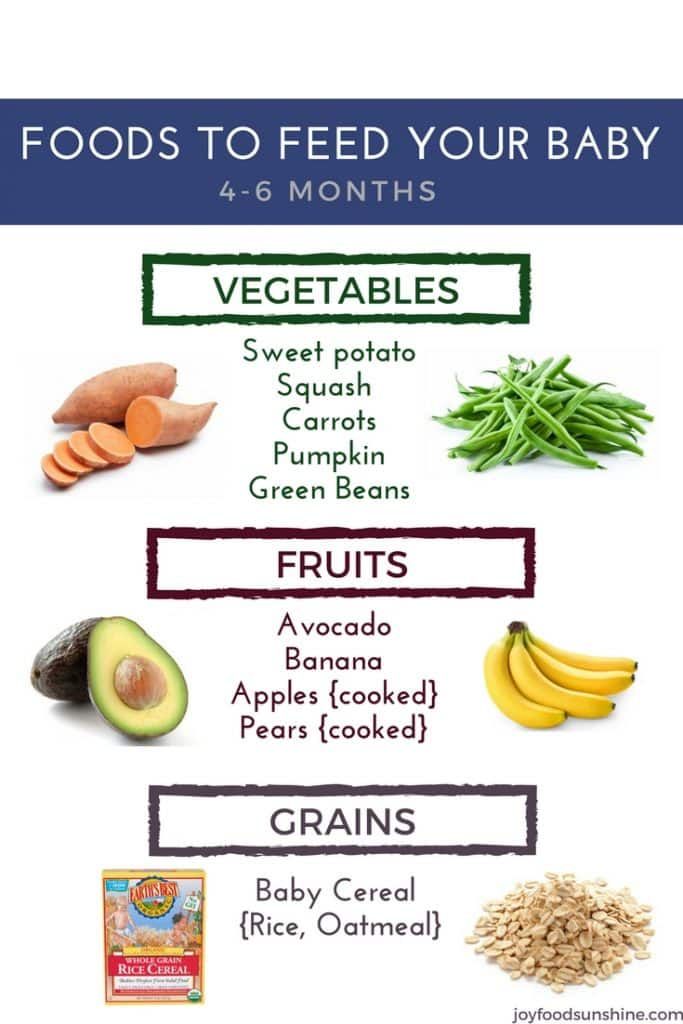 21 g 21 g | ~ | |||
| Fructose | 0.37 g | ~ | nine0117 | ||
| Sterols (sterols) | |||||
| Cholesterol | 5 mg | max 300 mg | nine0117 | ||
| Saturated fatty acids | |||||
| Saturated fatty acids | 1.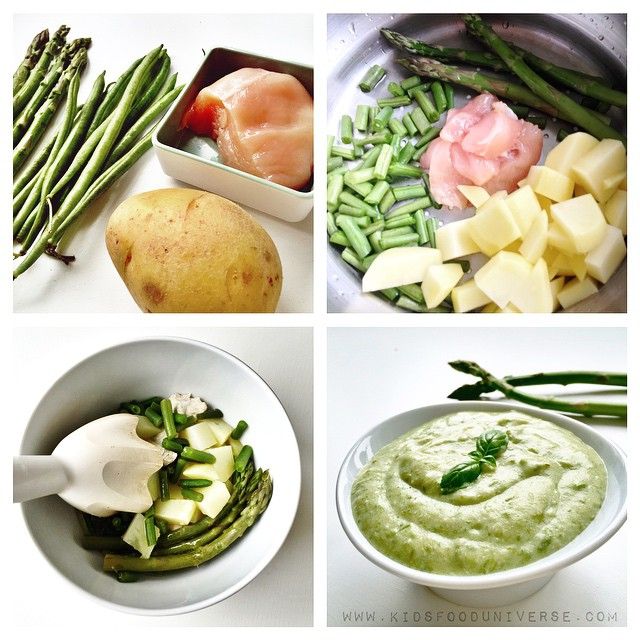 117 g 117 g | max 18.7 g | |||
| 4:0 Oil | 0.056 g | ~ | |||
| 6:0 Nylon | nine0013 0.033 g~ | ||||
| 8:0 Caprylic | 0.019 g | ~ | nine0025 | ||
| 10:0 Capric | 0.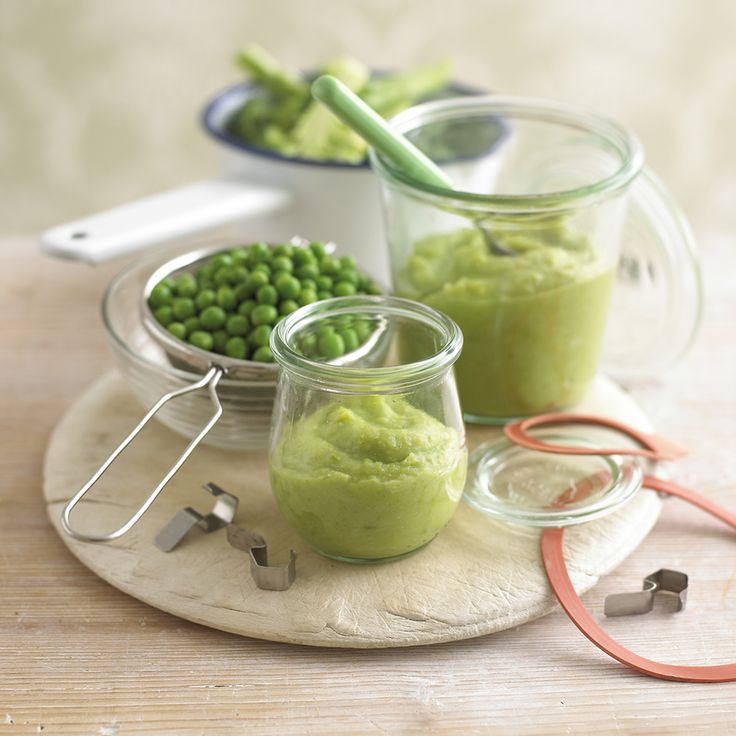 044 g 044 g | ~ | |||
| 12:0 Lauric | 0.049 g | ~ | nine0117 | ||
| 14:0 Myristic | 0.175 g | ~ | |||
| 16:0 Palmitic | 0.486 g | nine0013 ~||||
| 18:0 Stearic | 0.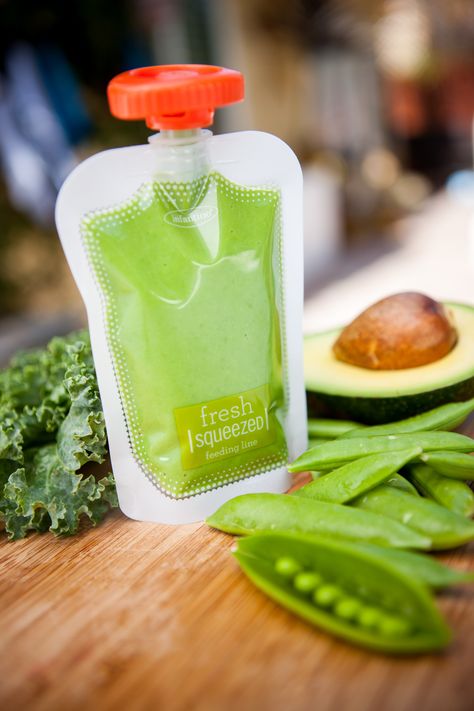 214 g 214 g | ~ | |||
| Monounsaturated fatty acids | 0.539 g | min 16.8 g | 3.2% | 5.2% | |
| 16:1 Palmitoleic | 0.04 g | ~ | nine0117 | ||
| 18:1 Oleic (omega-9) | 0.474 g | ~ | |||
| Polyunsaturated fatty acids | 0. 132 g 132 g | nine0013 11.2 to 20.6 g 1.2% | 1.9% | ||
| 18:2 Linoleic | 0.088 g | ~ | |||
| 18:3 Linolenic | 0.043 g | ~ | |||
| Omega-3 fatty acids | 0.043 g | 0.9 to 3.7 g | 4.8% | nine0013 7.||
| Omega-6 fatty acids | 0.088 g | 4.7 to 16.8 g | 1.9% | 3.1% |
Energy value Baby food, Vegetables, green beans and potatoes is 62 kcal.
- jar, Gerber (4 oz) = 113 gr (70.1 kcal)
Main source: USDA National Nutrient Database for Standard Reference. More.
** This table shows the average norms of vitamins and minerals for an adult. If you want to know the norms based on your gender, age and other factors, then use the application "My Healthy Diet" nine0003
Product calculator
Nutritional value per 100 g
| Content per serving | % of RSP | ||
| Calories | 62 kcal | -% | |
| Proteins | 2.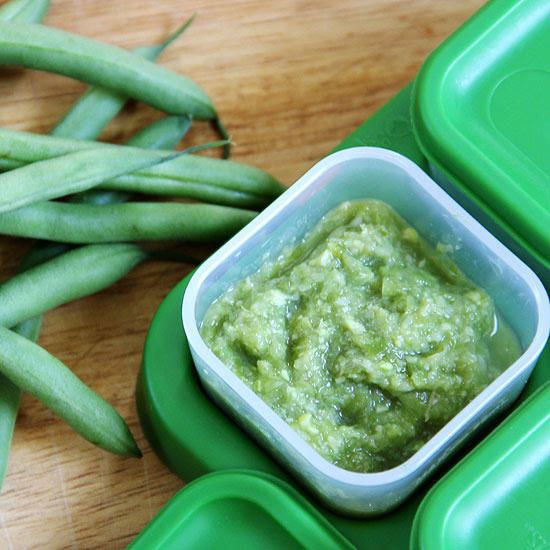 2 g 2 g | nine0013-% ||
| Fats | 1.9 g | -% | |
| Carbohydrates | 7.6 g | -% | |
| Dietary fiber | 1.4 g | nine0013-%||
| Water | 86.2 g | -% | |
Go to food diary
Vitamins and minerals
Most foods cannot contain the full range of vitamins and minerals. Therefore, it is important to eat a variety of foods to meet the body's needs for vitamins and minerals.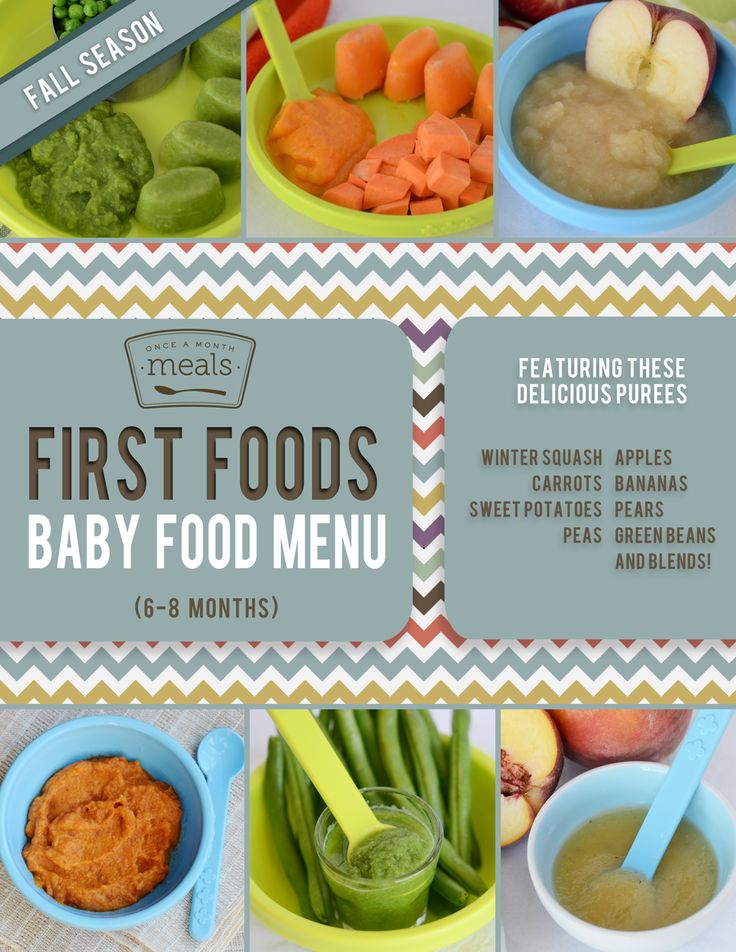 nine0003
nine0003
Find out the content of vitamins and minerals in your menu
Analysis of the calorie content of the product
The ratio of proteins, fats and carbohydrates:
Find out your energy balance for the whole day
Knowing the contribution of proteins, fats and carbohydrates to caloric content, you can understand how a product or diet meets the standards of a healthy diet or the requirements of a particular diet. For example, the US and Russian Departments of Health recommend 10-12% of calories from protein, 30% from fat, and 58-60% from carbohydrates. The Atkins diet recommends low carbohydrate intake, although other diets focus on low fat intake. nine0003
Calculate your norms
If more energy is expended than is supplied, then the body begins to use fat reserves, and body weight decreases.
Get recommendations
Get more information and make it happen with our free online course.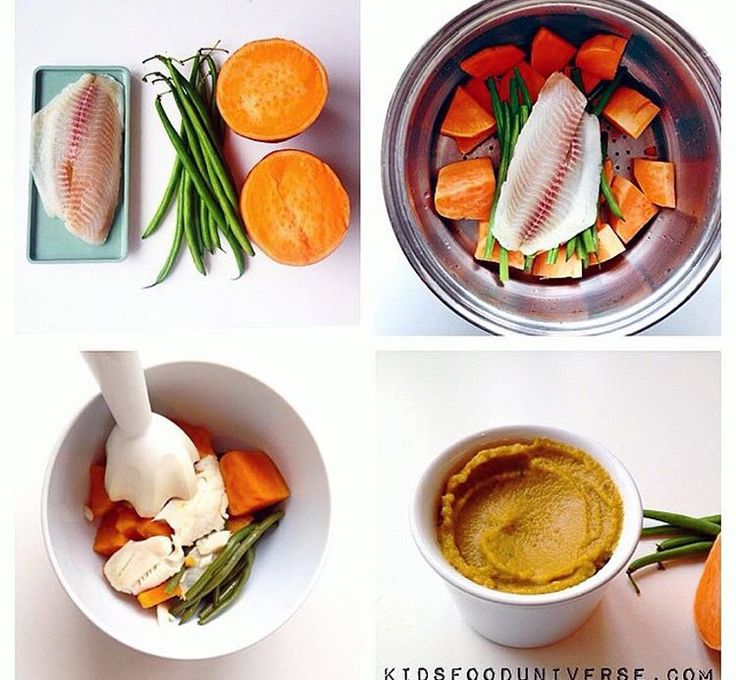
Learn online weight loss course
Try filling out a food diary right now without registering.
Complete the food diary
Find out your additional calorie expenditure for training and get detailed recommendations absolutely free.
Complete a training diary
Target deadline
Baby food, Vegetables, green beans and potatoes is rich in vitamins and minerals such as: manganese - 14%
- Manganese is involved in the formation of bone and connective tissue, is part of the enzymes involved in the metabolism of amino acids, carbohydrates, catecholamines; necessary for the synthesis of cholesterol and nucleotides. Insufficient consumption is accompanied by growth retardation, disorders in the reproductive system, increased fragility of bone tissue, disorders of carbohydrate and lipid metabolism.
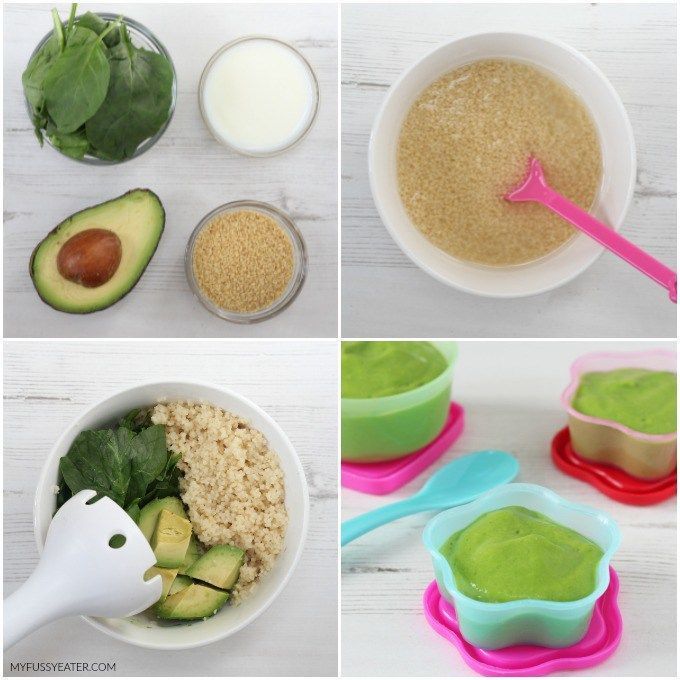 nine0813
nine0813
You can find a complete guide to the healthiest foods in the My Healthy Diet app.
Calorie content and chemical composition of other products
- Baby food, Vegetables, beets, puree
- Baby food, Vegetables, carrots, puree
- Baby food, Vegetables, squash (pumpkin or zucchini or squash), puree
- Baby food, Vegetables, sweet potato (yam), puree
- Baby food, Potato, for toddlers
- Home
- Composition of products
- Composition baby food
- Chemical composition "Baby food, Vegetables, green beans and potatoes"
Tags:
Baby food, Vegetables, green beans and potatoesCalories 62 kcal, chemical composition, nutritional value, vitamins, minerals Health Benefits Baby food, Vegetables, green beans and potatoes
Calculators
New recipes
Meatloaf with eggs, baked
nine0002 Author VeronicaCheese cake
Author Alena
Belgian waffles with cream cheese, mango, pomegranate
Author Alla
Interesting blogs
Zhenya
13-01-2023
Food diary for 01/13/2023
Eeeee! 43! It was not for nothing that in the mirror it seemed that he had eaten his belly .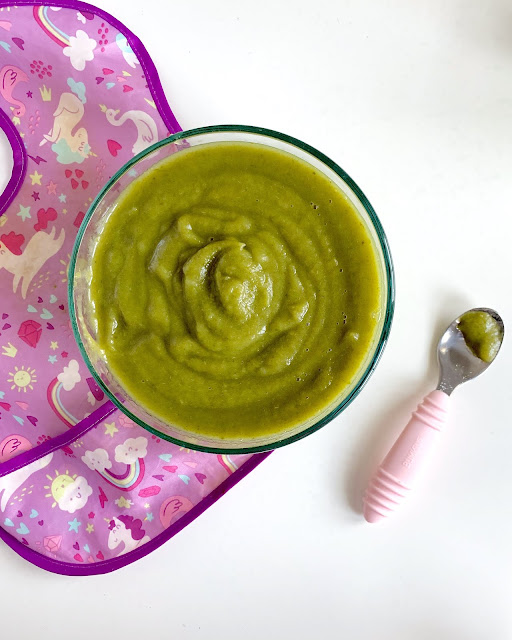 ..
..
Irina Maks
14-01-2023
Nutrition and training diary for 01/14/2023
Today's diet. :) I have a question. Often people...
Dmitry Bezpuza
09-01-2023
There is no longer a need for MZR.
Well, as practice has shown, counting calories, yes ...
Best rations
Alla
2023-01-01
Calories: 1000 kcal
Vitamins and minerals: 90%
Alla
2023-01-10
Calories: 1085 kcal
Vitamins and minerals: 90%
Margarita
2023-01-12
Calories: 1005 kcal
Vitamins and minerals: 81%
No strict diets
nine0002 Eat healthier food andget slimmer and healthier
Food diary
Control your diet and
acquire good habits
nine0014Honest work on oneself
The rate of weight loss due to fat, not
muscle or water - no more than 5 kg per month
Training diary
nine0002 Feel the difference between "thin"and slim body
Theory and knowledge base
Everything you need to know about physiology,
to lose weight wisely
Community
Find like-minded people
and reach the goal together
Complementary feeding rules: the doctor told how to move from simple to complex meals - Parents.
 ru - a complete nutritious and healthy dish that will not only saturate the baby, but also become an indispensable source of energy, which he needs so much for the first discoveries of the world. For a mother, such purees are a real find: just warm up the contents of the jar - and a hearty vitamin lunch for the child is ready. Combined meat purees are a balanced baby food, in which the percentage of each product clearly corresponds to the needs of the developing baby's body. The recipe of each puree is a joint work of pediatricians, gastroenterologists, nutritionists and baby food production technologists. Parents can only choose the most beneficial combinations for children's health. nine0003
ru - a complete nutritious and healthy dish that will not only saturate the baby, but also become an indispensable source of energy, which he needs so much for the first discoveries of the world. For a mother, such purees are a real find: just warm up the contents of the jar - and a hearty vitamin lunch for the child is ready. Combined meat purees are a balanced baby food, in which the percentage of each product clearly corresponds to the needs of the developing baby's body. The recipe of each puree is a joint work of pediatricians, gastroenterologists, nutritionists and baby food production technologists. Parents can only choose the most beneficial combinations for children's health. nine0003 The best for children!
Vegetables are one of the best side dishes for meat, both for adults and for the little ones. Zucchini, potatoes, pumpkin, cauliflower, broccoli, carrots, green peas, beans and spinach are the most common ingredients in combined meat purees. And this choice is not accidental: all vegetables are not only rich in vitamins and nutrients, they help to absorb iron and zinc, which are the main value of meat products.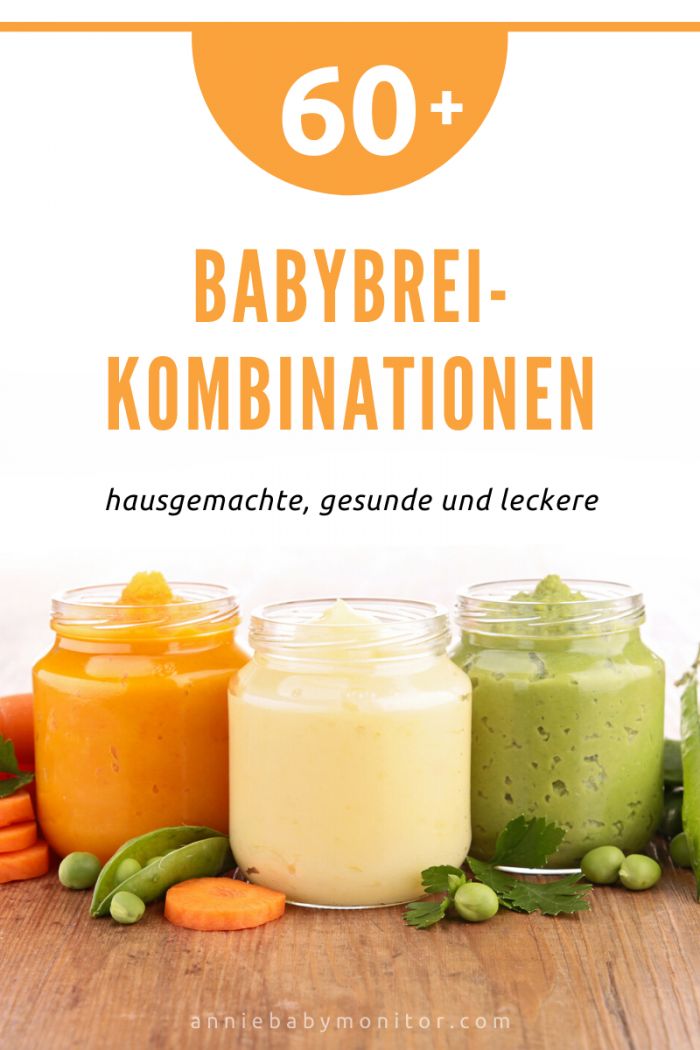 The main function of vegetables is to improve the functioning of the child's gastrointestinal tract. nine0003
The main function of vegetables is to improve the functioning of the child's gastrointestinal tract. nine0003
Cereals are a great side dish for babies who love to eat well to gain strength and energy. It is difficult to overestimate the nutritional value of cereals: oatmeal is rich in vegetable protein, vitamins, minerals and fiber; rice is a source of natural starch; buckwheat is a storehouse of iron, zinc, copper, magnesium and B vitamins. Moreover, cereals, like vegetables, help the baby's digestive system: oatmeal is indispensable for constipation, and rice is indispensable for too frequent stools.
What about the meat itself? It is an indispensable source of iron, B vitamins and animal protein, which cannot be replaced by vegetable proteins. Moreover, a baby can absorb the required amount of iron only from meat: the body takes 2-3% of iron from cereals and vegetables, and from beef, for example, 17-22%. The absence of meat in the baby's diet can lead not only to disruption of the gastrointestinal tract, but also to a lag in growth and development.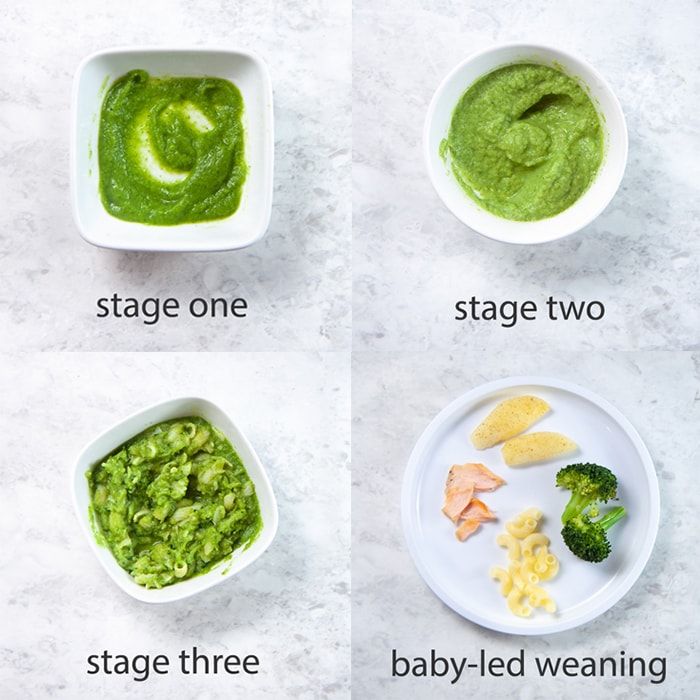
- Photo
- Getty Images/EyeEm
Everything in its time
The introduction of combined meat purees is usually recommended from 6-7 months. Despite the fact that in multicomponent purees the composition of meat often does not exceed 10-15%, it is not worth rushing to introduce them into the baby's diet. It is at this age that the children's gastrointestinal tract is ready for digestion and full assimilation of all the nutrients that are found in different varieties of meat and poultry. If you want to pamper your baby with offal (liver, hearts or tongue), wait a couple more months: they contain more animal fat and substances that are difficult for the body to absorb. But they contain more and valuable trace elements, so consult a pediatrician at what age your child can try such gastronomic delights. nine0003
The main thing is the benefit!
As for the choice of meat and a suitable side dish in the composition of mashed potatoes, be guided by well-known truths: babies with a healthy digestive system are allowed any kind of meat: beef, pork, lamb. If the child has a tendency to allergies and digestive troubles, give preference to mashed potatoes based on rabbit and turkey, these types of meat are considered dietary and hypoallergenic. Vegetables and cereals in mashed potatoes should also not cause allergies and provoke digestive disorders. If the baby has frequent constipation, do not buy mashed rice for him; better take, for example, a jar of green peas or zucchini - they normalize the child's stool. nine0003
If the child has a tendency to allergies and digestive troubles, give preference to mashed potatoes based on rabbit and turkey, these types of meat are considered dietary and hypoallergenic. Vegetables and cereals in mashed potatoes should also not cause allergies and provoke digestive disorders. If the baby has frequent constipation, do not buy mashed rice for him; better take, for example, a jar of green peas or zucchini - they normalize the child's stool. nine0003
The meal is served!
If your little one is picky when it comes to gastronomy, go for a trick. To get started, offer him a puree that contains a product (zucchini or buckwheat, for example) that he especially likes. It is good if the puree contains 2 or 3, but no more components. The child will concentrate his sensations on the familiar taste and, most likely, will appreciate the new combination. Step by step, you can offer him more multifaceted combinations, the taste buds of the crumbs will develop with each spoon.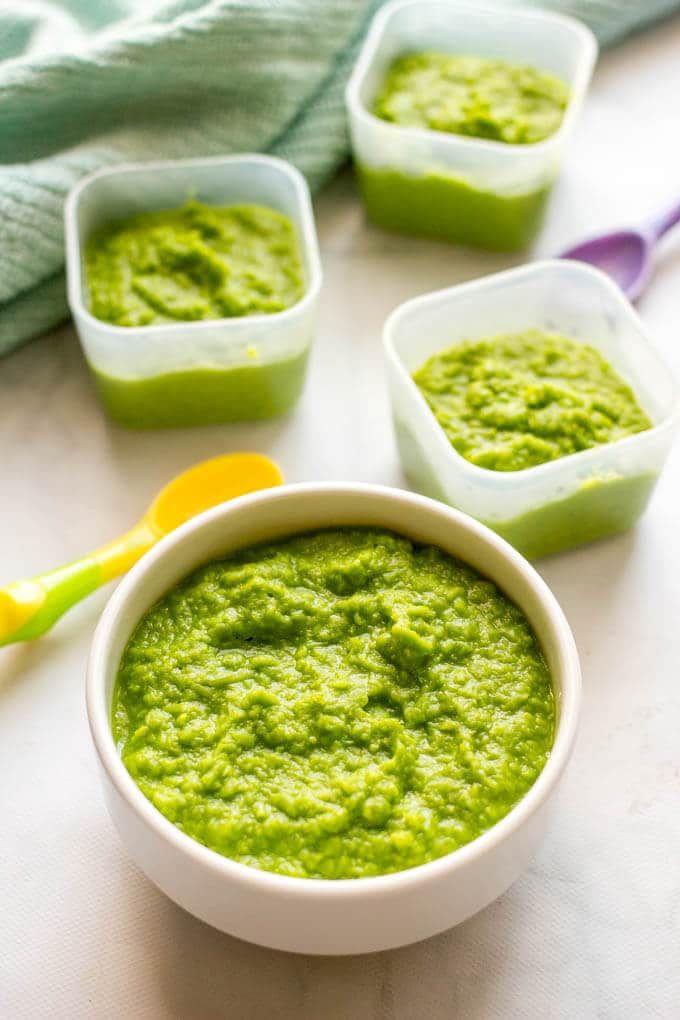 nine0003
nine0003
The first portion of the new delicacy is traditional - 1 teaspoon. Every day, gradually increase the amount of healthy puree, by the year a child can eat 180-200 g daily, and by two years as much as 250 g is acceptable every day. Meat with vegetables or grains is a hearty meal, offer this combination for lunch or dinner.
Baby food manufacturers produce multi-component meat purees of different degrees of grinding, because a 6-month-old baby is able to simply swallow food, and 9-, 10-month-old should already master chewing skills. Therefore, when choosing another jar, pay attention to the age indicated on the label. After 6 months, homogenized puree is suitable for crumbs, at 8-9 months - puree, and after 9-10 it's time to switch to coarsely ground.
- Photo
- Getty Images/iStockphoto
Multi-ingredient purees usually contain no more than 15% meat.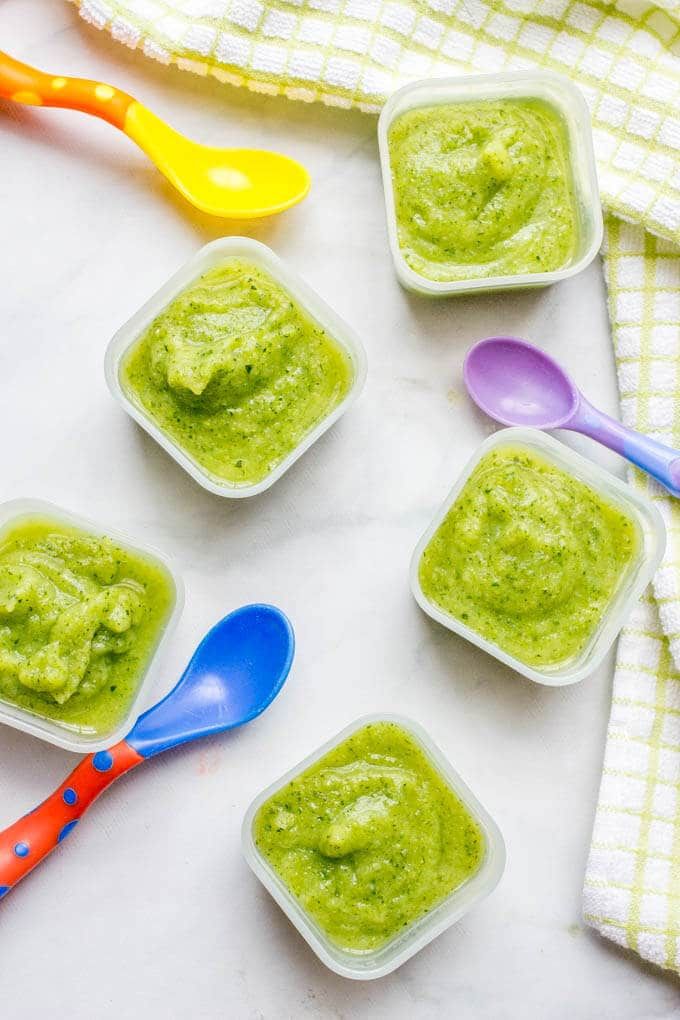 Everything else is vegetables, cereals, vegetable oil and natural seasonings. This balance is optimal for the child's developing digestive system. nine0003
Everything else is vegetables, cereals, vegetable oil and natural seasonings. This balance is optimal for the child's developing digestive system. nine0003
Vegetables
Namely: zucchini, potatoes, pumpkin, cauliflower, broccoli, carrots, green peas, beans, spinach, sweet peppers, tomatoes, etc.
Specialist comment. When choosing a vegetable "garnish" in the composition of puree, the mother should take into account the characteristics of the baby's body. Allergy sufferers should avoid carrots and tomatoes, and kids prone to increased gas formation should avoid peas. Check with your pediatrician.
Cereals: buckwheat, rice
Specialist's comment. Grains in the composition of multi-component purees, as a rule, are added for the consistency and satiety of the product. If the baby does not have digestive problems, choose any cereal, although buckwheat is the most useful in terms of the amount of minerals. If the baby has problems with stools, approach the choice more carefully, the doctor will tell you which cereal will help to cope with the existing problem.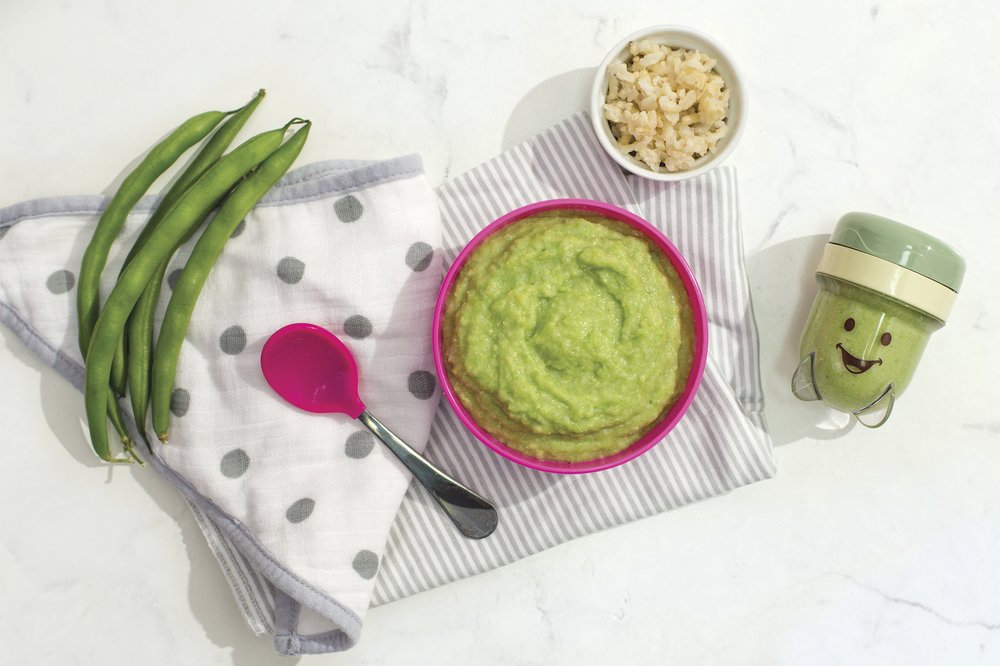
Vegetable oil
Specialist comment. nine1197 Baby food manufacturers typically use sunflower, olive or corn oil in their purees. This is necessary for better absorption of products, because vegetable oils are an indispensable source of fatty acids, vitamin E and lecithin, which are very important for the proper development of the baby's body and the functioning of his gastrointestinal tract.
Milk or cream
Specialist comment. Dairy products provide a more familiar texture for baby and add creamy tenderness to the palate. nine0003
Greens: dill, parsley
Specialist comment. The miraculous properties of "dill water" are known to every mother. In fact, parsley and dill are very useful for the entire child's body. First, they help the stomach digest and absorb food by stimulating the production of digestive enzymes. Secondly, they contain phytoncides - substances with antimicrobial action that protect the intestines from harmful microbes and strengthen the baby's immune system.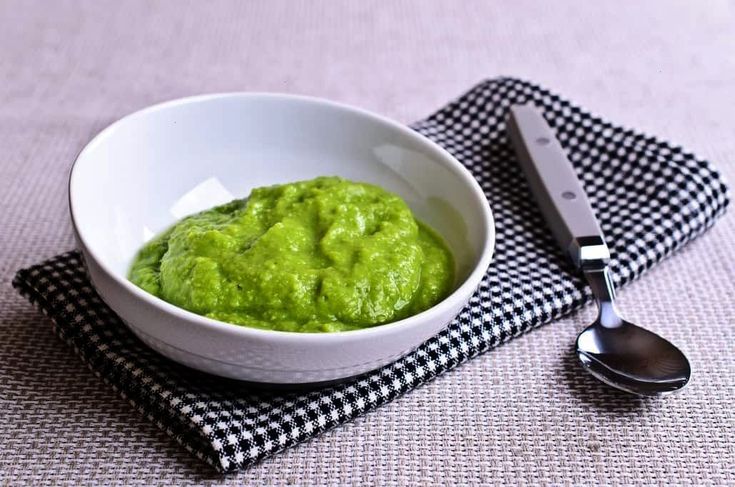

 04 mg
04 mg 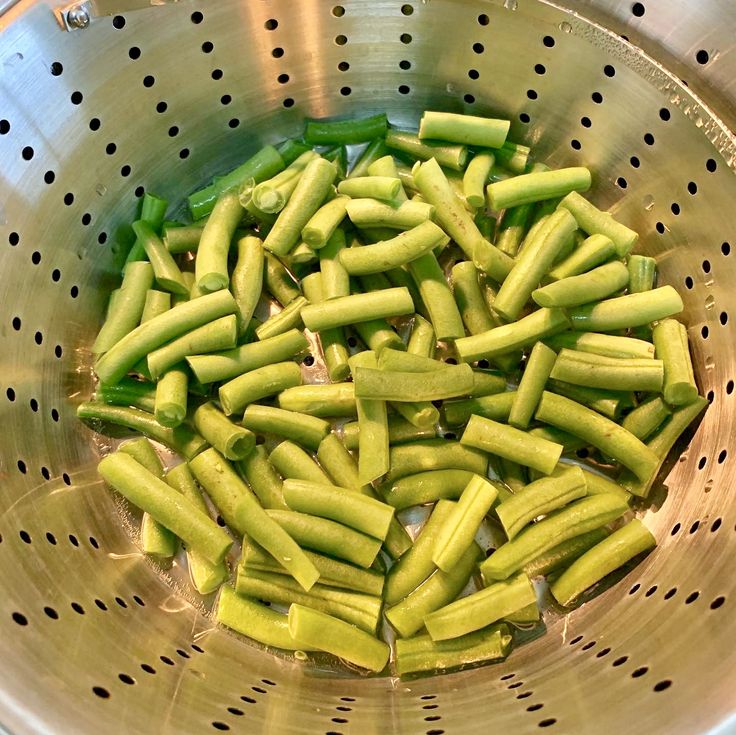 7%
7% 